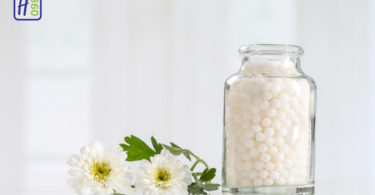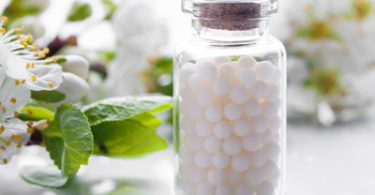Authors: Dr. Pramod singh1, Dr. Yudhishthir bhardwaj2, Dr. Gita Rajput3
Abstract
Urinary tract infection is a common problem. UTI is defined as the presence of symptoms like dysuria, frequency and significant presence of bacteria in urine. Women are at high risk of contracting UTIs due to a shorter urethra and the proximity of the anal and genital regions. This article deals with an Overview of Urinary Tract Infection, its causation, types, diagnosis and its homoeopathic management.
KEYWORDS
Homoeopathy, Urinary Tract Infection, homoeopathy
URINARY TRACT INFECTION:
Urinary tract infection (UTI) is a collective term that describes any infection involving any part of the urinary tract, namely the kidneys, ureters, bladder and urethra. The urinary tract can be divided into the upper tract (kidneys and ureters) and lower tract (bladder and urethra).
CAUSES
Urinary tract infections are caused when bacteria may grow in the urinary tract. The most common UTIs affect the bladder and urethra. Sexual intercourse with patient of UTI may lead to cystitis. All women are at risk of cystitis because of their anatomy specifically, the short distance from the urethra to the anus and the urethral opening to the bladder. UTI is commonly caused by Escherichia coli (E. coli).
PATHOGENESIS OF URINARY TRACT INFECTIONS:
Pathogens that cause complicated UTIs follow the same initial steps as those described for uncomplicated infections, including periurethral colonization (step 1), progression to the urethra and migration to the bladder (step 2). However, in order for the pathogens to cause infection, the bladder must be compromised. The most common cause of a compromised bladder is catheterization. Owing to the robust immune response induced by catheterization (step 3), fibrinogen accumulates on the catheter, providing an ideal environment for the attachment of uropathogens that express fibrinogen-binding proteins. Infection induces neutrophil infiltration (step 4), but after their initial attachment to the fibrinogen-coated catheters, the bacteria multiply (step 5), form biofilms (step 6), promote epithelial damage (step 7) and can seed infection of the kidneys (steps 8 and 9), where toxin production induces tissue damage (step 10). If left untreated, uropathogens that cause complicated UTIs can also progress to bacteraemia by crossing the tubular epithelial cell barrier (step 11).

SYMPTOMS
Urinary tract infections may be asymptomatic, but symptoms may include
- A strong, persistent urge to urinate.
- A burning sensation with or without urinating.
- Passing frequent, small amounts of urine.
- Urine that appears cloudy.
- Urine that appears red, bright pink or cola-colored — a sign of blood in the urine.
- Strong-smelling urine.
- Pelvic pain, in women especially in the center of the pelvis and around the area of the pubic bone.
TYPES OF URINARY TRACT INFECTION
Each type of UTI may result in more-specific signs and symptoms, depending on which part of your urinary tract is infected.
| Part of urinary tract affected | Signs and symptoms |
| Kidneys (acute pyelonephritis) | Upper back and side (flank) pain High fever Shaking and chills Nausea Vomiting |
| Bladder (cystitis) | Pelvic pressure Lower abdomen discomfort Frequent, painful urination Blood in urine |
| Urethra (urethritis) | Burning with urination |
Diagnosis
UTIs can be found by analyzing a urine sample. The urine is examined under a microscope for bacteria or white blood cells, which are signs of infection. Your health care provider may also take a urine culture. This is a test that detects and identifies bacteria and yeast in the urine, which may be causing a UTI
Homoeopathic prevention and treatment of UTI
Homeopathy is one of the best treatment of urinary tract infection. Some specific homoeopathic remedies in our materia medica are:
PRIMARY REMEDIES
CANTHARIS
Strong urging to urinate with cutting pains that are felt before the urine passes, as well as during and after may indicate a need for this remedy. Only several drops pass at a time, with a scalding sensation. The person may feel as if the bladder has not been emptied, still feeling a constant urge to urinate.
NUX VOMICA
Irritable bladder with a constant need to urinate, passing only small amounts, suggests a need for this remedy. Burning or cramping pain may be felt in the bladder area, with an itching sensation in the urethra while the urine passes. The person may feel very irritable, impatient, and chilly. Symptoms may be relieved by hot baths or other forms of warmth.
SARSAPARILLA
This remedy is often useful in cystitis and often helps when symptoms are unclear, or if other remedies have not been effective. Frequent urging is felt, with burning pain at the end of urination. Urine passes when the person is standing up, but only dribbling occurs while sitting. Flakes or sediment are sometimes seen in the urine. (Sarsaparilla is sometimes helpful when stones are forming or the kidneys are involved; however, these conditions need a doctor’s care).
OTHER REMEDIES
ACONITUM APELLUS
This remedy is often useful when a person feels anxious both before and during urination, with hot, scanty urine, and a burning or spasmodic feeling in the outlet of the bladder. It can also be helpful if retention of urine occurs after a person has been very cold and chilled, or after a shaking experience.
APIS MELLIFICA
This remedy is indicated when the person frequently needs to urinate, but only small quantities are passed. Stinging and burning sensations are felt (especially with the last few drops) and the person may also experience soreness in the abdomen. Heat and touch make the symptoms worse, and cold applications, cool bathing, and open air bring relief. A lack of thirst is another indication that Apis may be needed.
BELLADONNA
This remedy may be beneficial if urging to urinate is frequent and intense, and the bladder feels very sensitive. A cramping or writhing sensation may be felt in the bladder area. Small amounts of highly-colored urine pass. (This remedy is sometimes helpful if a person passes small amounts of blood and no serious cause can be found on medical examination).
BERBERIS VULGARIS
Cystitis with twinges of cutting pain, or a burning feeling that extends to the urethra and its opening, may indicate a need for this remedy. The passage may also burn at times when no attempt at urination is being made. After emptying the bladder, the person feels as if some urine still remains inside. Urging and discomfort are often worse from walking.
BORAX
This remedy can be helpful for cystitis with smarting pain in the urinary opening and aching in the bladder, with a feeling that the urine is retained. Children may cry or shriek, afraid to urinate because they know the pain is coming. Borax is often indicated for people who are sensitive to noise and inclined toward motion sickness.
CHIMAPHILA UMBELLATA
If a person has a troublesome urge to urinate but has to strain (or even stand up and lean forward) to make it pass, this remedy may be useful. A scalding sensation may be felt while the urine flows, with a feeling of straining afterward.
CLEMATIS
This remedy may be indicated if a person has to urinate frequently with only a small amount being passed. A feeling of constriction is felt in the urinary passage, and the flow may be interrupted, or there may be dribbling afterward. A tingling sensation may occur, lasting long after urination is finished.
EQUISETUM
If cystitis is accompanied by dull but distressing pain and a feeling of fullness in the bladder, even after urinating, this remedy may be helpful. Urging and discomfort are more intense when the bladder has recently been emptied, improving over time as the bladder become full.
LYCOPODIUM
This remedy may be helpful if a person has to urinate frequently during the night and passes large amounts of urine. Or the person may feel a painful urge, but has to strain to make the urine flow. Pain may be felt in the back before the urine passes. (If fever is present, the urine has a reddish color, or discomfort is felt in the kidney region, the person should see a doctor.)
SEPIA
This remedy may be helpful if a person has to urinate frequently, with sudden urging, a sense that urine will leak if urination is delayed, and small amounts of involuntary urine loss. The person may experience a bearing-down feeling in the bladder region, or pressure above the pubic bone. A person who needs this remedy often feels worn-out and irritable, with cold extremities, and a lax or sagging feeling in the pelvic area.
STAPHYSAGRIA
This remedy is often indicated for cystitis that develops in a woman after sexual intercourse, especially if sexual activity is new to her, or if cystitis occurs after every occasion of having sex. Pressure may be felt in the bladder after urinating, as if it is still not empty. A sensation that a drop of urine is rolling through the urethra, or a constant burning feeling, are other indications. Staphysagria is also useful for cystitis that develops after illnesses with extended bed rest, or after the use of catheters.
REFERENCES
- Flores-Mireles A, Walker J, Caparon M, Hultgren S. Urinary tract infections: epidemiology, mechanisms of infection and treatment options. Nature Reviews Microbiology. 2015;13(5):269-284.
- Tan C, Chlebicki M. Urinary tract infections in adults. 2020.
- Issue Information. LUTS: Lower Urinary Tract Symptoms. 2019;11(1):1-1.
- Balentine j. Urinary Tract Infection (UTI) Symptoms, Causes, Treatment & Home Remedies [Internet]. MedicineNet. 2020 [cited 2 April 2020]. Available from:
- [Internet]. 2020 [cited 2 April 2020]. Available from: https://www.researchgate.net/publication/274708145_Urinary_tract_infections_Epidemiology_mechanisms_of_infection_and_treatment_options
- Boericke W. Pocket Manual of Homoeopathic Materia Medica and Repertory. 9th Edition. New Delhi: B. Jain Publishers (P) Ltd; 2009.
- Clarke, J.H. A Dictionary of Practical Materia Medica. New Delhi: B. Jain Publishers; 1999.
- Patil J, Gems of homeopathic materia medica. 1st ed. USA Europe India: B.jain publishers (p) Ltd; 2013.
- Allen.HC, Keynotes and charateristics with comparisns of some of the material medica with bowel nosodes, 8th ed. B.jain Publishers(P) Ltd;2002.





